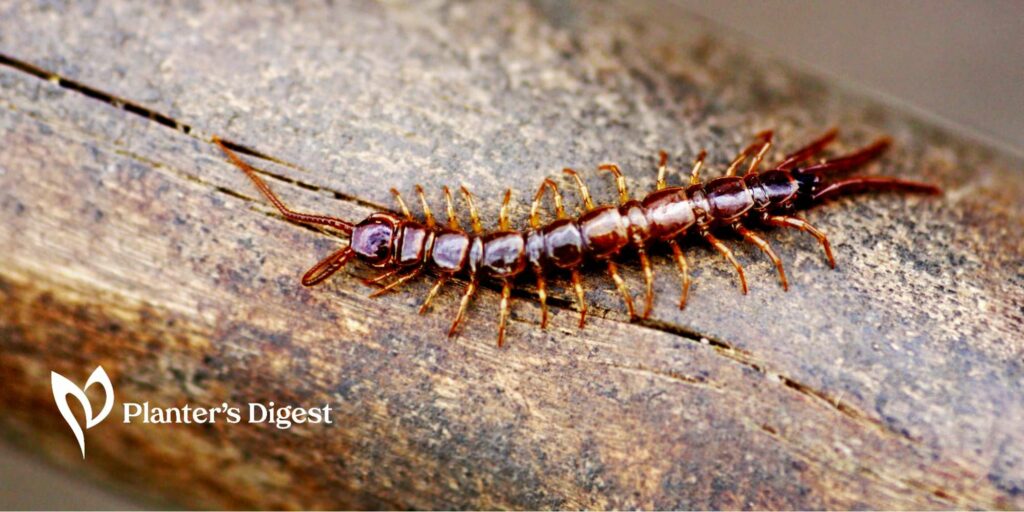House centipedes, aka Scutigera coleoptrata, are bugs that often sneak into homes and businesses, especially if there’s moisture and food around. But are they harmful?
And how do you get rid of centipedes indoors for good? We’ll tackle each question quickly!
Can centipedes harm houseplants?
Centipedes won’t harm your houseplants. In fact, they can be good for them because they eat other pests like insects and larvae that can damage plants.
You can spot them by their many long legs and worm-like bodies. Depending on the type, a centipede might have as few as 15 pairs of legs or as many as 177.
They’re mostly brown or black, but some have colorful markings.
Beware, though! These critters (the big and small ones) aren’t afraid to bite when they feel threatened, both to humans and pets.
While most keep their chompers to themselves unless provoked, the larger ones can pack a punch, with teeth and claw-like thingamajigs that can pierce human skin. Ouch!
And if you’ve got curious kiddos or furbabies around, it’s best to show these freeloaders the door. Below, we’ll arm you with tips to kick these centipedes to the curb and keep them from crashing your house party again!
How to Get Rid of Centipedes

If you feel those pesky centipedes have overstayed their welcome, especially around your prized houseplants, then good news! There are a bunch of ways to give them the boot.
Some methods are a bit more friendly, while others… well, let’s just say they’re not quite as hospitable. Let’s dive into each option, shall we?
Catch-and-Release
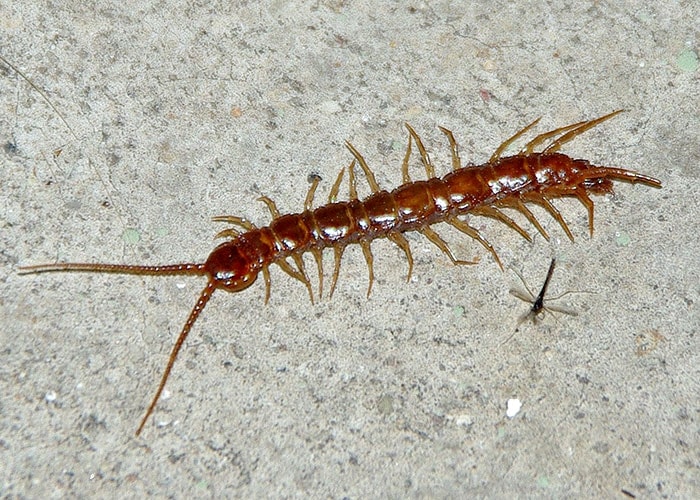
If you’re all about the catch-and-release game, gear up with the essentials first. You’ll need a container with a lid, whether it’s a jar or a plastic tub, and snag a piece of cardboard or sturdy paper while you’re at it.
How to Capture and Release Centipedes
- Approach the centipede cautiously, using cardboard to scoop it up gently.
- Keep alert, as centipedes can move quickly.
- Once captured, seal the container tightly to prevent escape.
- Release the centipede outdoors, preferably far from your home, in a suitable environment like a garden or wooded area.
Sticky Traps
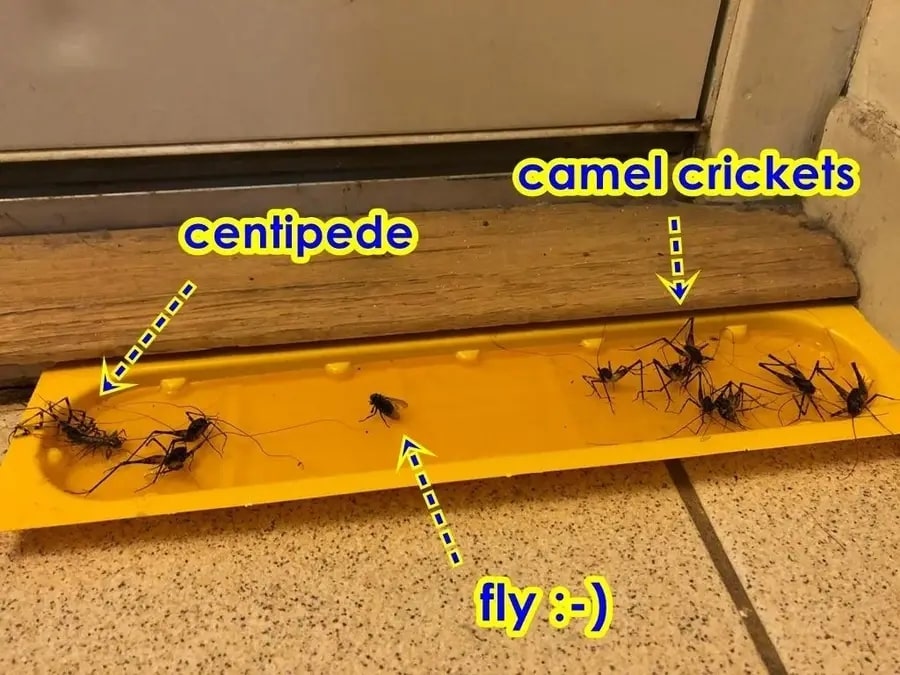
Sticky traps can be an effective way to catch centipedes without directly handling them. You can purchase sticky traps designed specifically for catching insects, which are available at most hardware or home improvement stores.
How to Use Sticky Traps for Centipedes
- Position traps along baseboards, corners, and areas frequented by centipedes.
- Focus on dark, damp spots where centipedes are drawn. Centipedes get caught on the sticky surface upon walking over it.
- Regularly inspect and replace traps, especially if they gather dust or debris.
- Dispose of trapped centipedes and keep replacing traps until centipede activity ceases.
Boric Acid
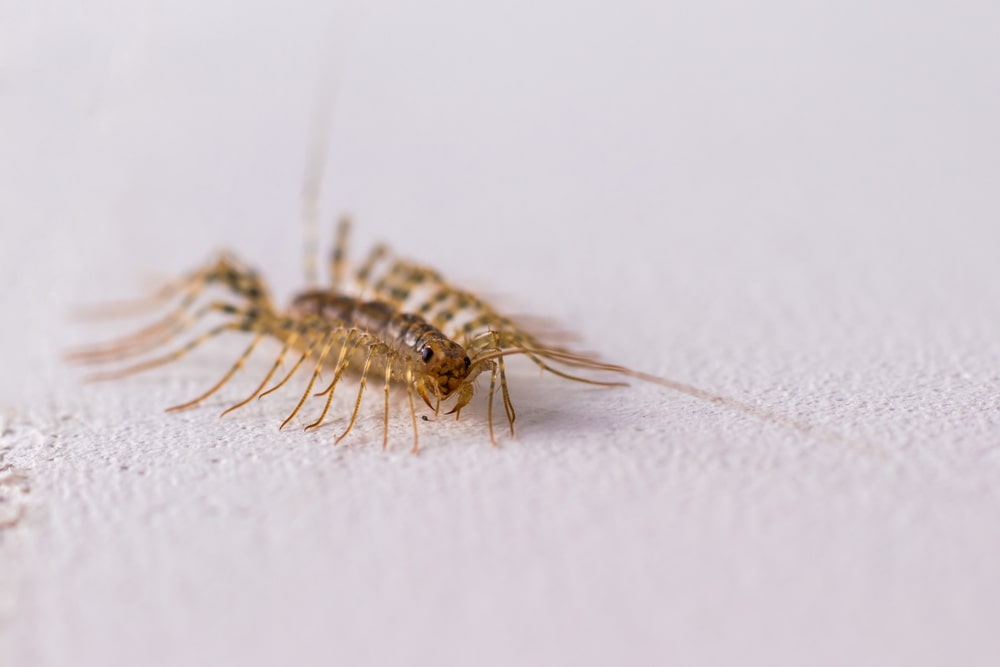
Image by Today’s Homeowner
Boric acid is a water-soluble compound made up of naturally occurring elements like oxygen, boron, and hydrogen. Boric acid is used for a wide variety of applications, including centipede control.
How to Use Boric Acid on Centipedes
- Sprinkle boric acid in areas where centipedes enter or gather, such as basements, crawl spaces, closets, and windowsills.
- Read the product’s guidelines before use and wear gloves during application.
- Ensure children and pets stay away from areas treated with boric acid.
Note: while boric acid isn’t typically life-threatening to humans, it’s a harsh chemical that can harm the skin.
Diatomaceous Earth
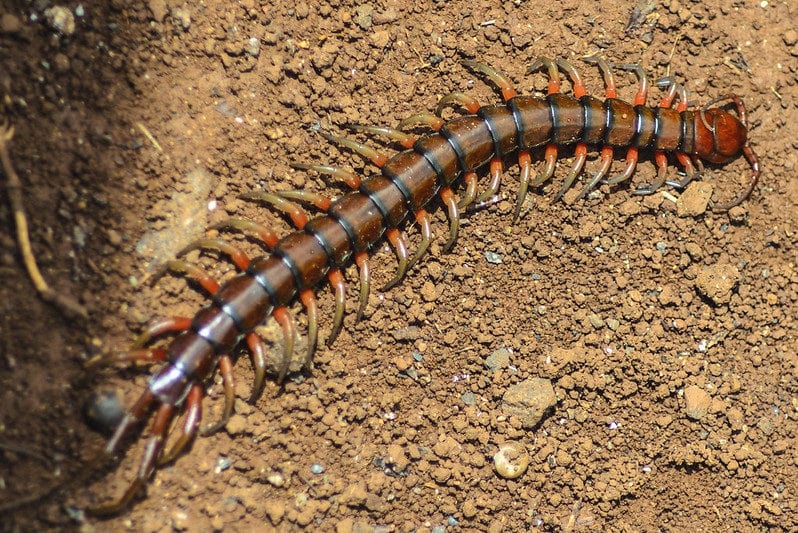
Diatomaceous earth (DE) is a special kind of soil made from ancient water plants that turned into fossils. And boy, does it pack a punch against those creepy crawlies like centipedes!
How, you ask? Well, those tiny fossils in it have edges sharper than a snarky comeback, slicing through bugs’ tough outer shells like a hot knife through butter.
The best part is that it’s harmless to us humans, but for bugs, it’s like entering a danger zone without a map. No nasty chemicals here, just pure, natural bug-busting power that keeps on working long after you’ve applied it.
You can buy diatomaceous earth at places that sell gardening stuff and home improvement things. It may look like your everyday talcum powder, but trust us, it’s got a lot more bite than meets the eye.
How to Use Diatomaceous Earth on Centipedes
- Sprinkle diatomaceous earth directly on soil in areas where centipedes and insects are seen in your garden. Wear a mask while applying dry to prevent inhaling the powder.
- In windy areas or for specific spots, apply diatomaceous earth when wet.
- 2.1 Mix 1 cup of diatomaceous earth powder with half a gallon of water in a spray bottle. Spray plants and soil until damp but not dripping.
- 2.2 Alternatively, create a thicker diatomaceous earth paste by using less water and apply it with a paintbrush.
Chemical Insecticides
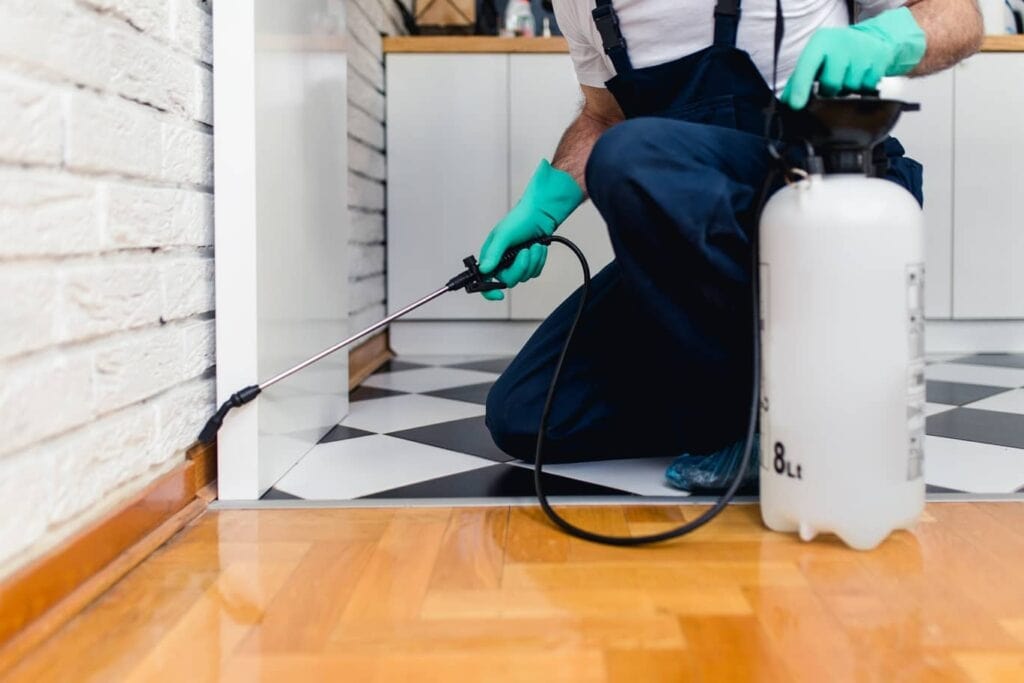
For a centipede showdown, it’s time to get crafty with chemical warfare — no mercy for those creepy crawlers! You can spray your way to victory by dousing baseboards, windows, and doors with chemical insecticides.
How to Use Chemical Insecticides on Centipedes
- Purchase a chemical insecticide or powder designed to kill centipedes.
- Read and follow the instructions on the product label carefully.
- Identify areas where centipedes are commonly found in the home.
- Apply the insecticide or powder directly to these areas, focusing on cracks, crevices, and entry points.
- Use a protective mask and gloves while applying the insecticide to avoid direct contact.
- Reapply the insecticide as directed on the label, typically every few weeks or as needed.
- Monitor the infested areas for any signs of centipedes and reapply the insecticide if necessary.
But don’t just go grabbing any ol’ spray — look for the ones packed with pyrethroids like deltamethrin, cyfluthrin, or lambda-cyhalothrin.
And don’t forget the great outdoors! You’ll need to slap a barrier of insecticide around your home to keep those critters from crashing the party.
But before you go trigger-happy, remember those chemicals are no joke! Keep them out of reach of the kiddos and the furballs, and follow the instructions to a tee.
And if you’re feeling extra fancy, powders are where it’s at! These bad boys are quick on the draw and work both indoors and outdoors.
Just whip out the ant dust and sprinkle it into those sneaky cracks and crevices where centipedes love to play hide and seek. Sure, it’s meant for ants, but it’ll send centipedes packing too!
Dehumidifier
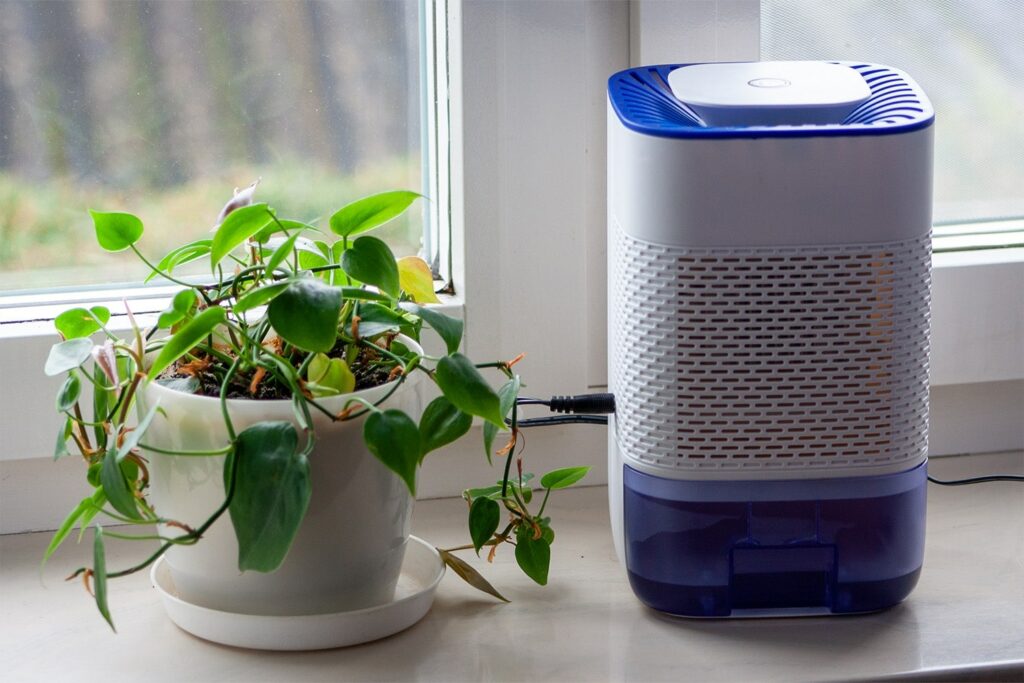
Centipedes are all about that moisture and they’re on the prowl for the perfect damp spot to hunt and hatch their mini leggy buddies. But you can kick these creepy crawlers to the curb without breaking a sweat!
Once summer heat rises, those centipedes are ready to party in your pad. And what do you do?
You whip out your trusty dehumidifier, of course! This bad boy sucks up all that extra moisture lingering in your humble abode, making it as dry as British humor.
And guess what? Centipedes hate dry digs, so they’ll be skedaddling quicker than you can say “Cheerio, centipedes!”
How to Prevent Centipedes
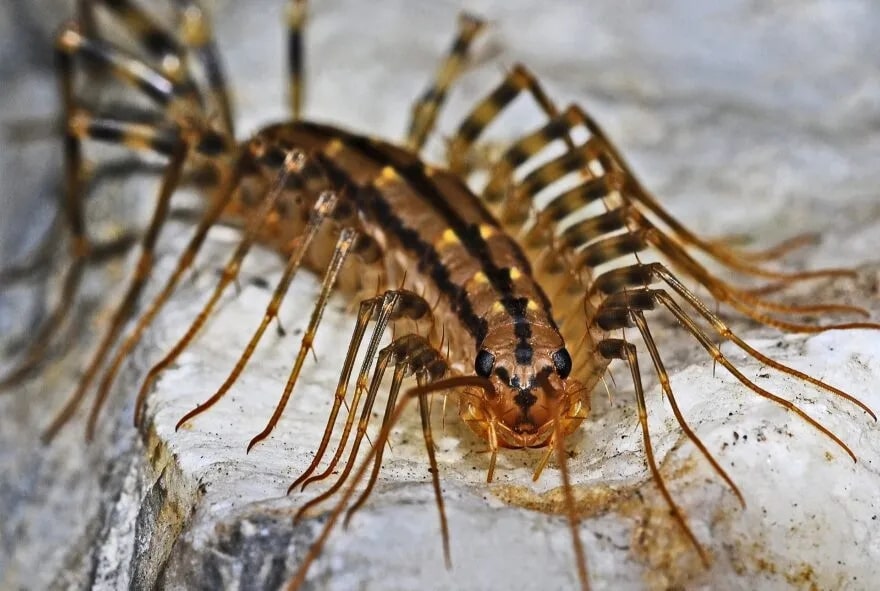
Once you’ve dealt with those creepy crawlers in your humble abode, it’s time to show them who’s boss and make sure they don’t come creeping back for round two.
Here are some savvy strategies to keep those centipedes at bay and ensure they don’t make a surprise comeback on your turf.
Eliminate or Reduce Moisture
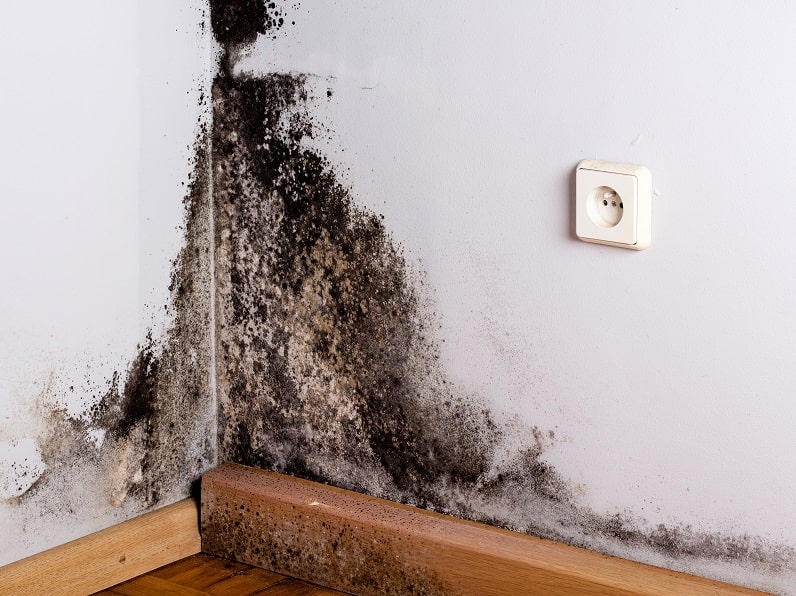
Centipedes can’t resist a moist and inviting environment, so it’s time to bid farewell to those pesky puddles around your property. There’s no need to panic, but let’s get rid of those damp areas pronto!
You’ll need to check out your home’s foundation for any trouble spots where water loves to hang out. Mulch mounds, leaf piles, and grass clippings are like centipede magnets, so toss them aside before the rain hits and turns them into centipede clubs.
It’s best to keep an eye on those gutters too — make sure they’re channeling water far, far away from your home’s base. If the pooling persists, it might be time to get creative with your yard’s terrain.
Get Rid of Hiding Spots
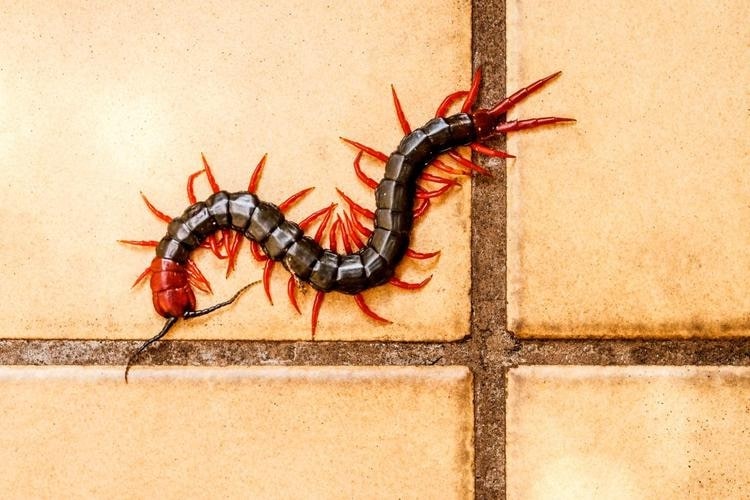
Centipedes are spindly-legged critters on a mission and are always on the prowl for hiding spots where their prey might lurk. To give those centipedes a run for their money, start by banishing hide-and-seek havens from your yard.
We’re talking about dark corners like leaf piles, stacks of firewood, and any clutter or garbage that’s just begging for a creepy-crawly hangout.
These sneaky pests thrive on the feast that lurks in these nooks and crannies, turning them into prime real estate for centipede colonies.
So, roll up your sleeves and clear out those shadowy spots, then give your perimeter a spritz of pesticide to keep those centipedes at bay!
And hey, if you’re a firewood fanatic, make sure you’re giving it the social distance treatment — keep it a solid 30 feet away from your cozy abode to avoid any unwanted infestations.
Seal All Cracks
So, you’ve tackled the stagnant water situation that’s been luring those creepy crawly centipedes to your turf. Now, let’s play detective and hunt down the sneaky entry points they’re using to crash your cozy abode!
These critters are masters of squeezing through the tiniest cracks, so get your caulk game on and seal up any openings you uncover in your home’s foundation. And don’t stop there!
You’ll need to take a peek indoors, especially in those hidey holes like crawl spaces or around exhaust fans, and patch up any additional gaps you spot. It’s all about giving those centipedes a one-way ticket out of your living space!
Keep Openings Closed
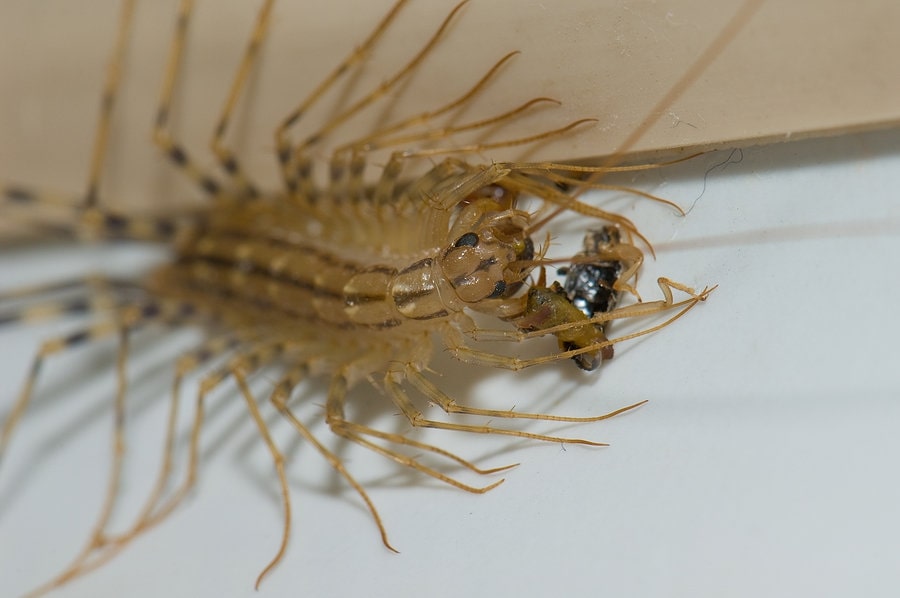
After making sure your home is as secure as Fort Knox, it’s time to play gatekeeper to those pesky pests. You’ve got to keep those doors and windows shut tighter than a jar of pickles in a pantry!
If there are sneaky cracks at the base of your door, where centipedes think they’re clever enough to slide through, slap on some sealant or snag a door stopper to show them who’s boss.
Eliminate Centipede Food Source
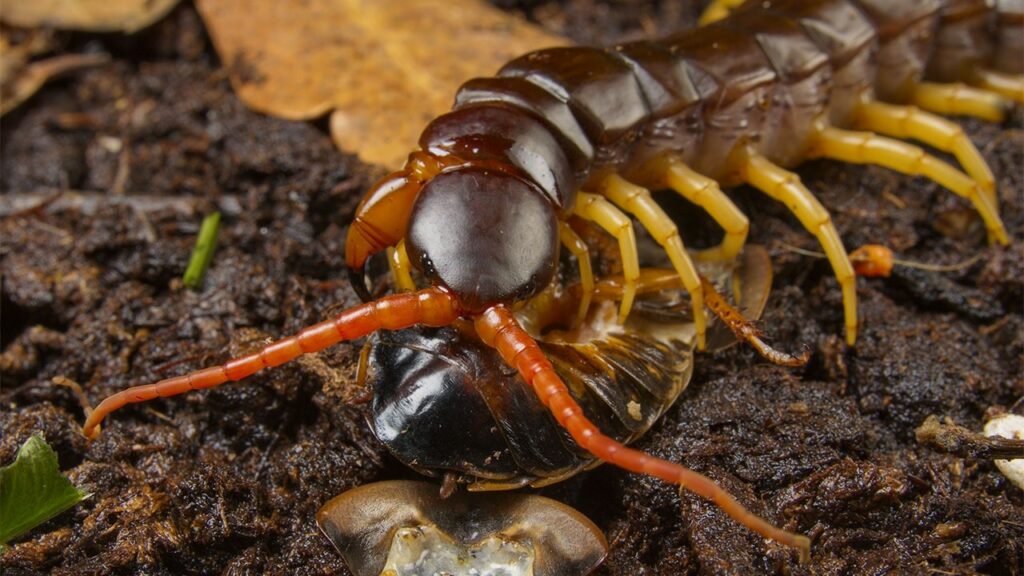
In the bug-eat-bug world, centipedes reign supreme as voracious predators, chowing down on a buffet of creepy crawlies ranging from termites to flies.
Got a termite problem? Are bedbugs bugging you?
Centipedes are quickly on their case — ready to munch on any unwanted guests! But beware, if your humble abode is already a haven for pests, centipedes might just decide to crash the party and make themselves at home.
So, if you’re already playing host to an insect infestation, it’s high time to kick those unwanted guests to the curb with targeted solutions. Once you’ve bid farewell to the feast, you’ll likely see those centipedes scuttle away too.


